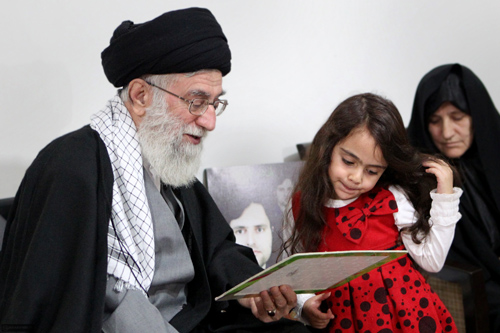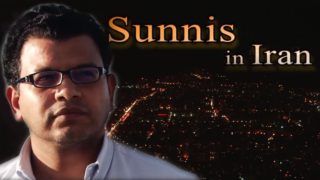Documentary Biography of President Mohammad Ali Rajai
November 6th, 2016
Mohammad Ali Rajai ( 15 June 1933 – 30 August 1981) was the president of Iran from 2 to 30 August 1981, a post he was elected to after serving as prime minister under Abolhassan Banisadr. He was also minister of foreign affairs from 11 March 1981 to 15 August 1981, while he was prime minister. He was assassinated in a bombing on 30 August 1981 along with prime minister Mohammad Javad Bahonar.
Mohammad Ali Rajai was born on 15 June 1933 in Qazvin, Iran. His father, Abdulsamad, died when he was 4 years old after which he lived with his mother and brother. Rajai grew up in Qazvin, and moved to Tehran in 1946. After moving to Tehran, he had a close relationship with the anti-Shah groups and parties. He was known to have an association with Ayatollah Mahmoud Taleghani. In 1958, He moved to Bijar for a short period, but after a year, he moved back to Tehran and graduated with a degree in education from Tarbiat Moallem University in 1959. He became a member of the People’s Mujahedin of Iran (MKO).
He was actively involved in the Iranian Revolution and was a leader in the movement to purge Iranian universities of American and European influences, which was later called the Cultural Revolution.
Before the Islamic revolution
Rajai lived very simply and without luxury. At the same time he had a commitment to Islam. He spent his preliminary studies in Qazvin City. He traveled to Tehran in 1946 and joined the air force a year later. He resigned from the air force so he could obtain his bachelor’s degree. It was during these years he became to associate with Ayatollah Taleghani and the Fadaeian group, and was active afterwards in 1960 with Mehdi Bazargan and Sahabi from the Freedom Movement. ِAfter he was released from prison in 1963, along with Muhammad Javad Bahonar and Jalal Al Din Farsi, he became concerned with political and cultural affairs. He was again arrested in 1973 because of his cooperation with the Mujahedin group and was imprisoned for 4 years. He was finally released from prison in 1979 when the Islamic Revolution gained ground.
After the Islamic revolution
After the Islamic Revolution Rajai was elected/ appointed in a number of posts, including minister of education, minister of foreign affairs, member of parliament, prime minister, and finally president.
Ministry of Education
At first Gholam Hosein Shokouhi was the Minister of Education and Rajaei was one of his advisors. After Shokoohi’s resignation for medical reasons, Muhammad Ali Rajaei was appointed as the director of the Ministry of Education. Mehdi Bazargan would later appoint him Minister of Education in his cabinet. During the nine months he spent as minister, he introduced a number of revolutionary programs to the ministry, which included a complete overhaul of the ministry’s mission and its treatment of both teachers and students, and his attempt to end discrimination among different schools, completely changing the education system so as to be more representative of Islam.
Appointment as Prime Minister
In 1979, Rajai left the Freedom Movement. Although Bazargan’s cabinet resigned on November 6 1979, he did not resign and remained in the post until August 12 1980 when he became prime minister, when Bani Sadr chose him for the position and was voted in by Parliament. It during his term as prime minister that the Iran–Iraq War started and his government’s priority became “victory and defense”. He was in office until August 2 1981, when he became the second President of Iran.
Presidency
Bani Sadr was impeached on June 22nd 1981 by parliament, and Khomeini held a Provisional Presidential Council by 6 people headed by Seyyed Mohammad Beheshti and later Abdul-Karim Mousavi Ardebili. Rajai was one of the members of that Council. He nominated himself for the presidential election in 1981, which he won in a landslide victory after securing 91% of the votes, and chose Mohammad Javad Bahonar as his prime minister.
Assassination
On 30 August 1981, President Rajai held a meeting of Iran’s Supreme Defense Council, in which both he and Prime Minister Mohammad Javad Bahonar were present. Witnesses later stated that a trusted aide brought a briefcase into the conference room, set it between the two leaders, and then left. Another person opened the case, triggering a bomb that set the room ablaze and killed Rajai, Bahonar, and three others. The assassin was identified as Massoud Keshmiri, an operative of the People’s Mujahedin of Iran (also known as the MKO, MEK and PMOI), who had infiltrated the Prime Minister’s office in the guise of a state security official. Rajai was buried in Behesht-e Zahra.



